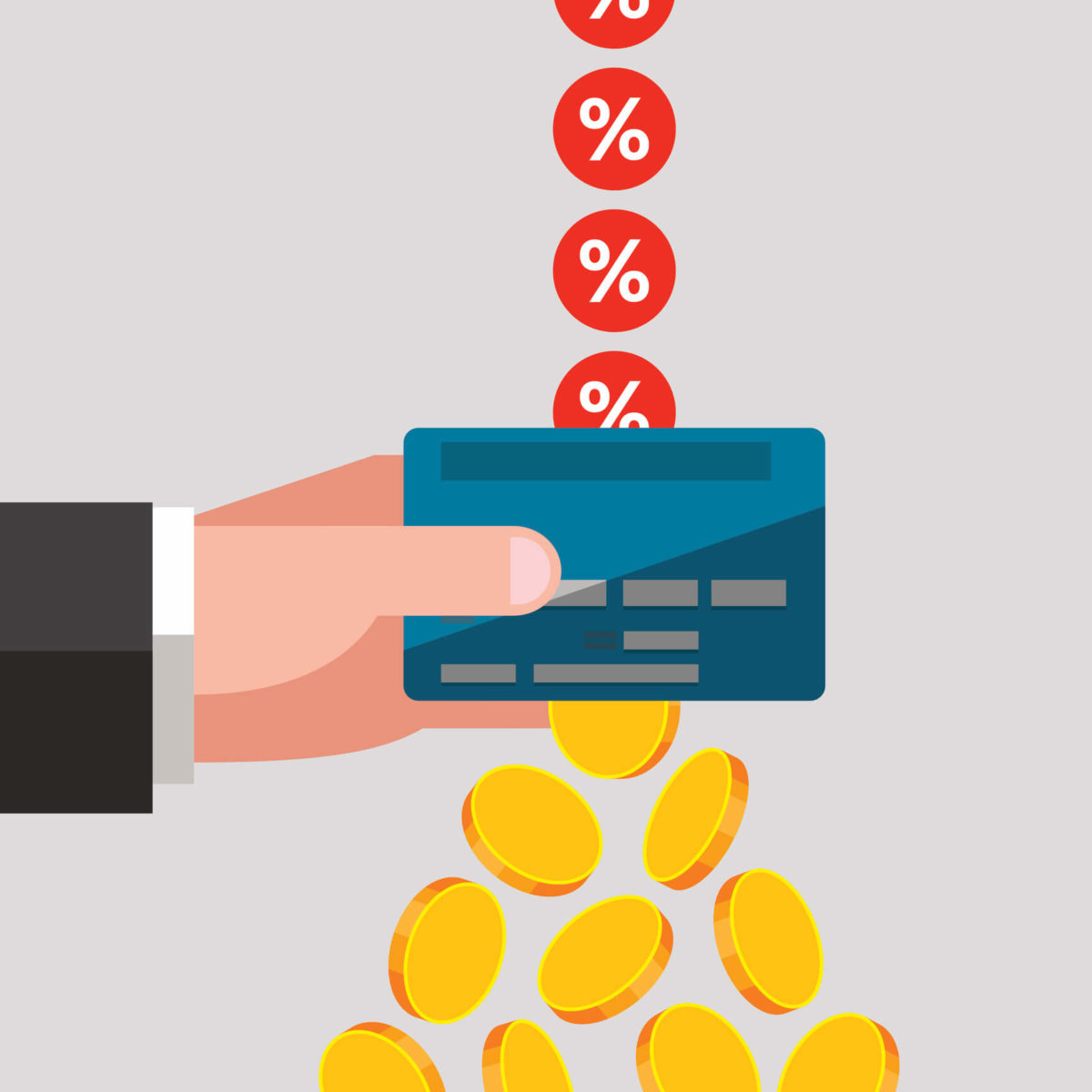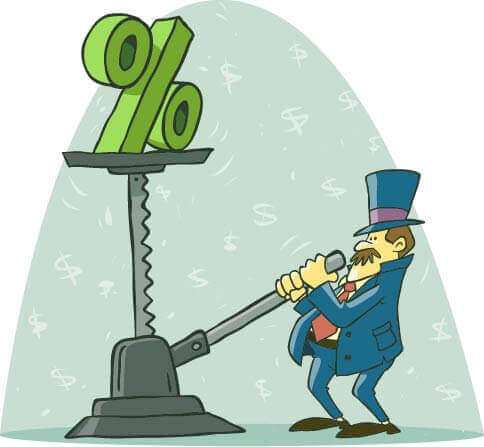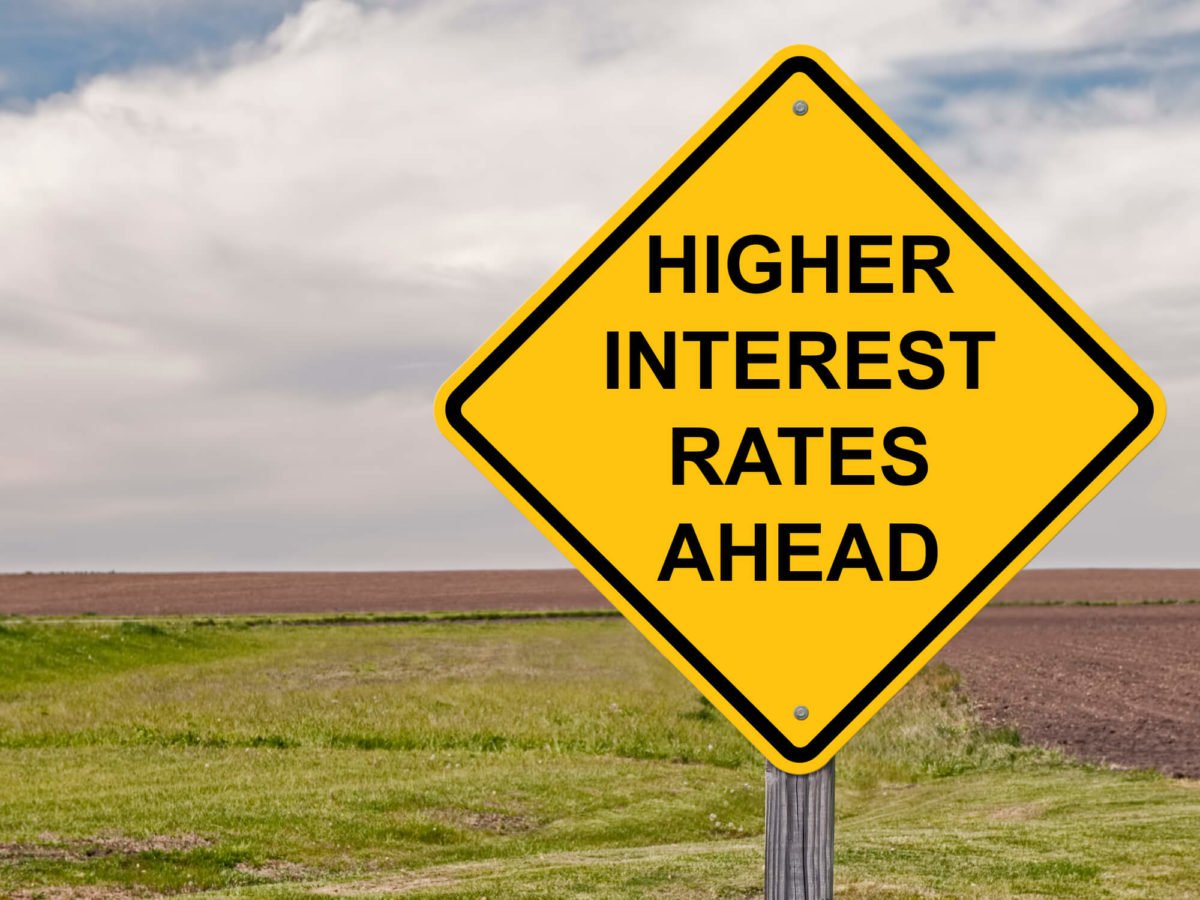Credit Card APR: How Interest Charges Apply to Debt
If you have credit card debt to pay off, high APRs are probably the reason you can’t pay it off quickly.
Credit cards are notorious for creating “treadmill” debt. That’s where you pay and pay, month after month, but you never seem to get anywhere. The reason is often rooted in high credit card APR that’s applied to your balances. These high interest rates eat away at every payment you make, which prevents you from reaching zero efficiently.

What is APR?
APR is an acronym that stands for annual percentage rate. This is the rate that the creditor applies to calculate interest charges if you carry a balance on your account. Interest charges are how credit card companies generate revenue whenever they extend a line of credit to a consumer.
How credit card APR works
Interest charges only apply to credit card debt if you carry a balance over from month to month. If you start a billing cycle at zero, then pay off charges in-full within that cycle, interest does not apply. This is how you can use high APR credit cards interest free.
However, if you begin a billing cycle with an outstanding balance, then the creditor applies interest charges to the debt. This is how that works:
- First, the creditor calculates a periodic interest rate.
- This is the annual percentage rate divided into the number “periods” (billing cycles) within one year.
- In most cases you can calculate the periodic interest rate on your account by dividing the APR by 12.
- Then, the creditor applies the periodic rate to your average daily balance.
- This is the average balance you carried each day of the month.
- The creditor multiplies the periodic interest rate by the average daily balance to calculate accrued interest charges for the month.
- When you make a payment, the creditor deducts these accrued charges from the amount you pay.
- As a result, only a portion of each payment you make goes to pay off principal; that’s the actual debt that you owe.

High APR leads to higher accrued interest charges. So, if you have high credit card interest rates, it makes it difficult to get out of debt. With minimum payments, you may only pay off a few dollars at a time, depending on the APR.
Current average APR on credit cards
| Type of Credit Card | Average APR |
|---|---|
| National average on all cards | 16.15% |
| Low APR credit cards | 12.89% |
| General rewards credit cards | 16.24% |
| Cash back rewards | 16.40% |
| Airline travel rewards | 16.07% |
| Balance transfer credit cards | 15.38% |
| Cards for people with bad credit | 23.46% |
Types of credit card APR
A credit card may have multiple interest rates that apply at different times. The primary rate is known as purchase APR or standard APR for purchases. This is the rate applied when you use your card in a store, at a restaurant, or to shop online or through an app.
However, that’s probably not the only APR listed in your credit card statement.
- Promotional / introductory APR: This is a special rate that applies for a period of time after you open the account.
- In most cases, it offers 0% APR for 6-24 months, depending on your credit score.
- One the promotional period ends, the standard purchase APR takes effect.
- Balance transfer APR: This is the rate applied to balances you transfer to the card from other accounts.
- Balance transfers offer one type of debt consolidation, because they allow you to combine multiple balances on a single card.
- Balance transfer credit cards typically offer promotional periods, such as 0% APR or low APR on transfers for 6, 12 or 18 months.
- Once the promotion period ends however, this rate tends to be higher than the standard rate for purchases
- Cash advance APR: This rate applies only to cash that you withdraw if you use your credit card at an ATM.
- You can use a credit card to take out cash just like a debit card, but interest charges apply.
- This rate tends to be much higher than most other rates on the card.
- Penalty APR: This is the rate that the creditor imposes if you miss payments.
- Instead of applying the regular purchase APR, they apply a penalty rate.
- You must make six consecutive payments on-time to remove penalty APR and restore your standard rate.
Compare purchase annual percentage rate to other rates »
How do credit card companies determine my rate?
There is not one set rate, even for a specific credit card. The rate on your cards may be significantly different than your neighbor’s rate. That’s because creditors use a combination of factors to determine your individual rate.

How high or low an APR goes is largely based on the following:
- The benchmark interest rate from the Federal Reserve at the time you open the account
- Your credit score
- They type of card you wish to open (i.e. reward credit cards usually have higher rates)
If you have excellent credit and apply for a low APR credit card when the Fed drops interest rates, you minimize interest charges. Changes in circumstances may change your rates.
IMPORTANT NOTE: Credit card APR can change!
Most (not all) credit cards have variable interest rates. That means the rate can change based on what’s happening with the economy. If the Federal Reserve increases benchmark interest rates, expect your rates to increase, too. So, if the Fed raises the rate by 0.25% then you should see your rates increase by that amount, too. Speaking of which, the Fed has raised rates 3 times by 0.25% in twelve months; experts say to expect at least one more increase by the end of 2017.
Of course, if the economy is weak and the Fed drops interest rates, it’s good for anyone carrying a balance. Your debt may be slightly easier to pay off.
Addressing Challenges Created by High Credit Card APR
Even low APR credit cards have relatively high interest rates
In 2017, average credit card interest rates fell between 15 to 16% APR, depending on the type of card. Accounts for people with bad credit or low credit scores had average rates over 20% APR.
However, even if you have excellent credit, credit card interest rates are still comparatively high compared to other loan products. The rate applied to your mortgage, car loans, and student loans should be much lower – usually less than 10%.

So, even a low APR credit card still has relatively high interest charges. If you carry balances over month to month, then you’re probably burning money accrued interest charges. And you shouldn’t be happy about that. In fact, you should constantly look for ways to reduce the APR applied to your debt.
Option 1: Talk to your creditors to negotiate lower interest rates
This should be a task that you do routinely, at least once every few years. Never be satisfied with the rate you have on an existing account. If you haven’t talked to a creditor in a while, give them a call to ask a customer service representative for a rate reduction. You will have more success if you…
- Have been a loyal customer for a number of years
- Your credit score improved since you opened the account or requested your last reduction
- You have not missed any payments
The customer service representative may need to pass you up to a supervisor to authorize the reduction. It’s good to be armed with as much information as possible. So, refer back to the chart above or find current average credit card interest rates through another accredited online provider. This will give you a starting point for negotiations, if you know how far off the average rate you are.
Option 2: Consider balance transfers while your debt is still manageable
Let’s say you run up a $3,000 balance on a cash-back reward credit card that has 21% APR. For most budgets, that amount of debt will take at least a few billing cycles to pay off. Even if you pay more than the minimum payment or make fixed payments, interest charges will apply. And the longer it takes to reach zero, the more money you burn.
If you add $50 extra on top of the minimum payment, you cut interest charges to $1,450. But it still takes you over four years to eliminate the debt. And, if you make $300 fixed payments, you reduce charges even further; down to just $326.79.
Still, even with fixed payments it costs more than 10% of what you borrowed to repay what you owe. In this case, it still takes a year to pay off the debt, giving the creditor 12 opportunities to apply interest charges.
In many cases, it may be financially beneficial to transfer that balance to a 0% APR balance transfer credit card. With good credit, you can get a 0% promotion period of 12 months. Now make that same $300 fixed payment. You’ll be out of debt in 10-11 months instead of 12 without any interest charges applied. So, it’s faster and more cost effective.
Option 3: Consolidate credit card debt with a personal loan
As we mention above, loans tend to have much lower interest rates versus credit cards. With your same credit score, you may qualify for a personal loan at 5% APR where you qualify for 15% APR on a credit card. So, it sometimes makes sense to take out a personal loan and use the funds to pay off your credit card balances. This is known as a debt consolidation loan.
Debt consolidation loans are often beneficial when you have too much debt to consolidate and pay off with a balance transfer. Paying off $3,000 in debt within 12 months is easy; paying off $30,000 in the same timeframe is not – the monthly payments would top $2,500.
Since most people don’t have that kind of cash available to pay off debt interest-free, then it makes sense to at least aim for a lower rate. If you can cut interest charges by two thirds from 15% to 5%, that makes it dramatically easier to pay off what you owe. Even if you keep your monthly payments the same, you’ll be out of debt much faster. You’ll also pay notably less interest as you work to reach zero.
Option 4: Let professionals negotiate for you
All the options above, including negotiation, require that you have good credit and positive payment history. If you don’t, they’re less likely to work effectively. For instance, if you have subprime credit, you may not get approved at all for a balance transfer credit card. Even if you can get approved for a persona loan, the interest rate might be around 12%; that may not provide the rate reduction benefits you need.
In this case, you may need professional help to lower interest rates. This usually involves working with a consumer credit counselling agency. You enroll in a voluntary repayment plan called a debt management program. Then the credit counselling team negotiates to reduce or eliminate interest charges with each of your creditors.
